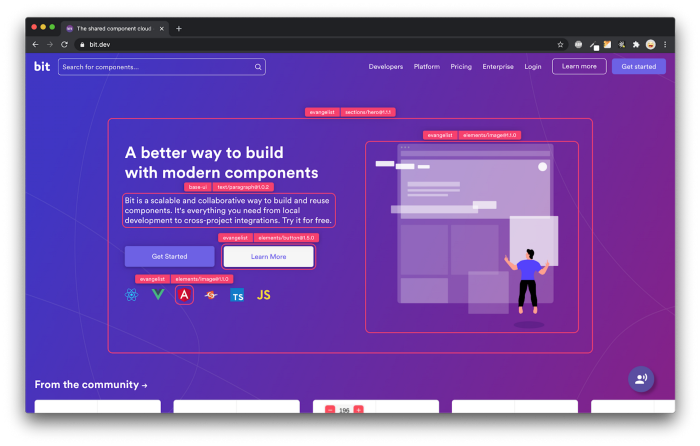This content originally appeared on Bits and Pieces - Medium and was authored by Dany Paredes
Understanding Map, Filter, Tap, SwitchMap, ConcatMap, CombineLatest, StartWith, DistinctUntilChanged, DebounceTime, and CatchError with a practical example.

Today, one of our teammates was curious about which RxJS operators they’d need to create a search feature in Angular. I let them know that while RxJS has loads of operators, they don’t need to know them all. I usually stick with Map, Filter, Tap, SwitchMap, ConcatMap, CombineLatest, StartWith, DistinctUntilChanged, DebounceTime, and CatchError.
So instead of overwhelming our teammates with every marble diagram, showing them a practical example would be more helpful. I used the “dummyjson API” to create a search feature and included all the essential RxJS operators I mentioned earlier. This way, they could see how everything works together in a real-life scenario. 😊
Building The Search
We must create a product search feature for the Product Search page, which fetches data from the “dummyjson API.” Users can search for products by name, and the app will display the results.
We have two main actors search.component.ts and search.service.ts.
The Search Component
- The Search component has an HTML input; we listen to the event (input) every time the user types a keystroke.
- The event is managed by the searchByTerm method invokes the search service with each keystroke.
- We utilize the async pipe to obtain data from the products$ observable and the data emitted by this.searchService.products$.
import { Component, inject } from '@angular/core';
import { CommonModule } from '@angular/common';
import { SearchService } from './search.service';
import { Observable } from 'rxjs';
@Component({
selector: 'search',
standalone: true,
providers: [SearchService],
imports: [CommonModule],
template: `
<div>
<h1>Search</h1>
<input type="text" #searchTerm (input)="searchByTerm(searchTerm.value)" />
<div class="product" *ngIf="products$ | async as products">
<div *ngFor="let product of products">
<h3>{{ product.title }}</h3>
<img [alt]="product.title" [src]="product.thumbnail" />
</div>
</div>
</div>
`,
})
export class SearchComponent {
#searchService = inject(SearchService);
products$: Observable<any> = this.#searchService.products$;
searchByTerm(value: string) {
this.#searchService.searchByText(value);
}
}👉🏽 We could enhance this process by using fromEvent and piping the data, but for now, we’ll focus on showcasing some popular operators.
💡 What if you could pack this Search component into a package and reuse it across all your projects? With Bit you can do just that. Bit is an open-source toolchain that lets you “harvest” Angular components from your codebase and share them on bit.dev. This would let you reuse them across all your projects, enabling you to write scalable code, speed up development, and maintain consistency in your UI.
Learn more about it here:
The Search Service
This is the crux of the article: We use RxJS operators in combination with HttpClient retrieving data and making API requests, and we pipe the data with the operators. However, the communication is made possible thanks to a special guest: the Observable Subject.
Let’s take a moment to explain the Observable Subject, as some readers may have never used it or might be unfamiliar with it.
The Subject is a type Observable that enables both emitting data and subscribing to it.
When the user types in the component, it triggers the searchByText function in the service. We then utilize the searchTermSubject to emit the data using the .next() method.
Next, we create the observable products$ from searchTermSubject emissions and apply all the RxJS operators to it.
products$ = this.searchTermSubject.asObservable().pipe( )
Now we covered the idea about the Subject, so let us work with the operators in the stream of data from searchTermSubject.
We aim to incorporate the following features into the search:
- Prevent excessive API requests when the user types rapidly.
- Avoid making duplicate requests to the API.
- Skip searches with fewer than three letters.
- Fetch data from the API only after the previous conditions have been met.
- Extract a specific property from the API response.
The final code looks like this:
import {inject, Injectable} from '@angular/core';
import {HttpClient} from "@angular/common/http";
import {catchError, debounceTime, distinctUntilChanged, filter, map, of, Subject, switchMap, tap} from "rxjs";
@Injectable()
export class SearchService {
http = inject(HttpClient);
#API ='https://dummyjson.com/products/search'
#searchTermSubject = new Subject<string>()
products$ = this.searchTermSubject.asObservable().pipe(
debounceTime(500),
distinctUntilChanged(),
filter(termSearch => termSearch.trim().length > 5),
tap((searchTerm) => console.log(`The search term: ${searchTerm}`)),
switchMap((searchTerm) => this.fetchProducts(searchTerm)),
map((response: any) => response.products)
);
searchByText(term: string) {
this.searchTermSubject.next(term.trim());
}
private fetchProducts(searchTerm: string) {
const apiUrl = `${this.#API}?q=${searchTerm}`;
return this.http.get(apiUrl).pipe(
catchError((error) => {
console.error('Error getting Products', error)
return of([])
})
);
}
}Hey there! Let’s take a moment to go through these operators step by step, so you can understand what each one does. 😊
The RxJS Operators
- DebounceTime: Reducing Rapid Events The debounceTime operator limits the rate at which events are processed. By using debounceTime(500), we ensure that our service only processes user input every 500 milliseconds, preventing excessive API requests when the user types rapidly.
- DistinctUntilChanged: Eliminating Duplicates The distinctUntilChanged operator ensures that consecutive duplicate values are not emitted. This helps to avoid making duplicate requests to the API. distinctUntilChanged(),
- Filter: Refining the Search The filter operator refines our query by ensuring it is at least three characters long before proceeding to the API. This narrows down the search results.
- SwitchMap: Handling Observables, The switchMap operator allows us to switch between observables. In this example, we use switchMap to fetch data from the API only after the user input has passed through debounceTime, distinctUntilChanged, and filter.
- CatchError: Handling Errors The catchError operator helps us handle errors gracefully if the API call encounters any issues.
- Map: Transforming Data The map operator transforms the data emitted by an observable. In our example, we use it to extract the product property from the API response.
- Tap: Side Effects The tap operator allows us to perform side effects, such as logging, without affecting the main data flow. In our case, we use it to log the fetched products.
It’s finished; we’ve learned each operator’s purpose and explanations for their use in our search service.
Conclusion
We’ve used all the operators we discussed earlier, and I hope they made sense to you. These are the ones I use quite often. There’s another popular operator called combineLatest that we didn’t include here, but don’t worry. You can check it out in another article.
Combined operators are super handy when working with RxJS. Even though there are many operators, the ones we discussed should help you with your everyday tasks. I hope these examples make your RxJS journey easier!
If like please share!😊
Build Angular Apps with reusable components, just like Lego

Bit’s open-source tool help 250,000+ devs to build apps with components.
Turn any UI, feature, or page into a reusable component — and share it across your applications. It’s easier to collaborate and build faster.
Split apps into components to make app development easier, and enjoy the best experience for the workflows you want:
→ Micro-Frontends
→ Design System
→ Code-Sharing and reuse
→ Monorepo
Learn more:
- Introducing Angular Component Development Environment
- 10 Useful Angular Features You’ve Probably Never Used
- Top 8 Tools for Angular Development in 2023
- Getting Started with a New Angular Project in 2023
- How We Build Micro Frontends
- How to Share Angular Components Between Projects and Apps
- How we Build a Component Design System
- Creating a Developer Website with Bit components
Originally published at https://www.danywalls.com.
Key RxJS Operators Every Angular Developer Should Know was originally published in Bits and Pieces on Medium, where people are continuing the conversation by highlighting and responding to this story.
This content originally appeared on Bits and Pieces - Medium and was authored by Dany Paredes
Dany Paredes | Sciencx (2023-04-26T06:02:10+00:00) Key RxJS Operators Every Angular Developer Should Know. Retrieved from https://www.scien.cx/2023/04/26/key-rxjs-operators-every-angular-developer-should-know/
Please log in to upload a file.
There are no updates yet.
Click the Upload button above to add an update.
